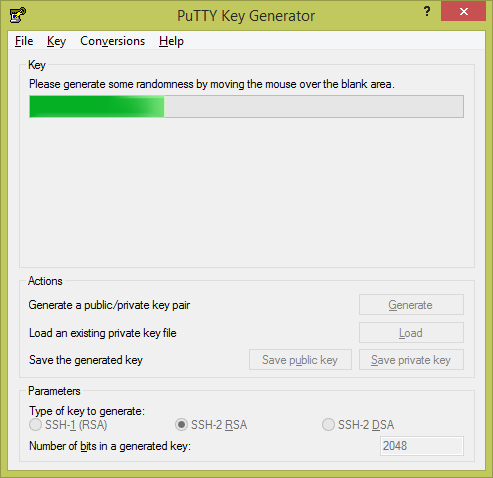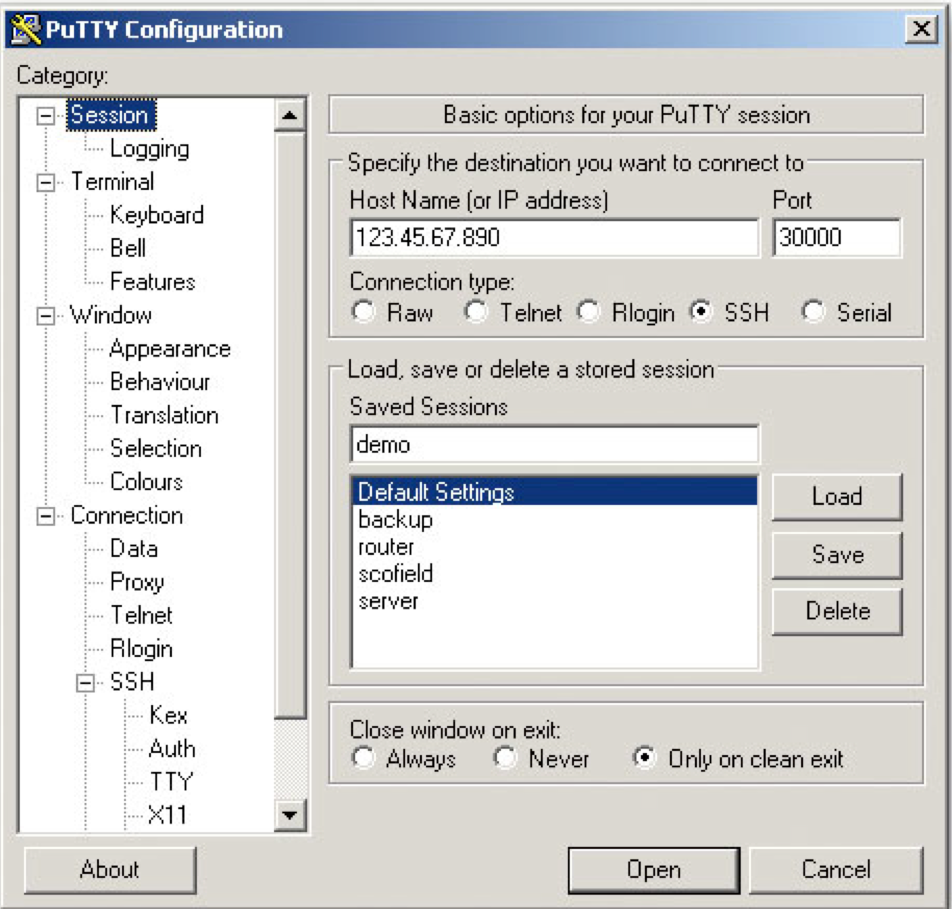How do I convert my Amazon Elastic Compute Cloud (Amazon EC2) Privacy Enhanced Mail (.pem) file to a PuTTY Private Key (.ppk) file? Or, convert a .ppk file to a .pem file?
Short Description
PuTTY doesn't natively support the private key format (.pem) generated by Amazon EC2. You must convert your private key into a .ppk file before you can connect to your instance using PuTTY. You can use the PuTTYgen tool for this conversion. This tool, available for both Windows and Unix operating system, can convert keys.
This guide describes how to generate and use a private/public key pair to log in to a remote system with SSH using PuTTY.PuTTY is an SSH client that is available for Windows and Linux (although it is more common on Windows systems). In order for the server to recognize your computer when connecting from PuTTY, you need to attach the private key to PuTTY. Open up PuTTY. Navigate to Connection - SSH - Auth in the left sidebar. Browse for your private key file in the field Private key for authentication. Jul 19, 2013 Click the Save public key button & choose whatever filename you'd like (some users create a folder in their computer named mykeys); Click the Save private key button & choose whatever filename you'd like (you can save it in the same location as the public key, but it should be a location that only you can access and that you will NOT lose!
Resolution

Windows - install PuTTYgen
Most Windows operating systems have PuTTY installed. If your system doesn't, download and install PuTTYgen.
Windows - convert a .pem file to a .ppk file
Start PuTTYgen, and then convert the .pem file to a .ppk file. For detailed steps, see Convert Your Private Key Using PuTTYgen.
Windows - convert a .ppk file to a .pem file
- Start PuTTYgen. For Actions, choose Load, and then navigate to your .ppk file.
- Choose the .ppk file, and then choose Open.
- (Optional) For Key passphrase, enter a passphrase. For Confirm passphrase, re-enter your passphrase.
Note: Although a passphrase isn't required, you should specify one as a security measure to protect the private key from unauthorized use. Using a passphrase makes automation difficult, because human intervention is needed to log in to an instance or to copy files to an instance. - From the menu at the top of the PuTTY Key Generator, choose Conversions, Export OpenSSH Key.
Note: If you didn't enter a passphrase, you receive a PuTTYgen warning. Choose Yes. - Name the file and add the .pem extension.
- Choose Save.
Unix or Linux - install PuTTY
Install PuTTY, if it's not already on your system.
Important: A PuTTY package is provided by the Extra Packages for Enterprise Linux (EPEL) repository. You must enable the EPEL repository before you install PuTTY.
To install PuTTY, run one of the following commands:
RPM-based
Dpkg-based
Unix or Linux - convert a .pem file to a .ppk file
On the instance shell, run the puttygen command to convert your .pem file to a .ppk file:
Puttygen Key Generation Utility

Unix or Linux - convert a .ppk file to a .pem file
Run the puttygen command to convert a .ppk file into a .pem file:
/onboard-secure-cryptographic-key-generation.html.
Related Information
Anything we could improve?
Need more help?